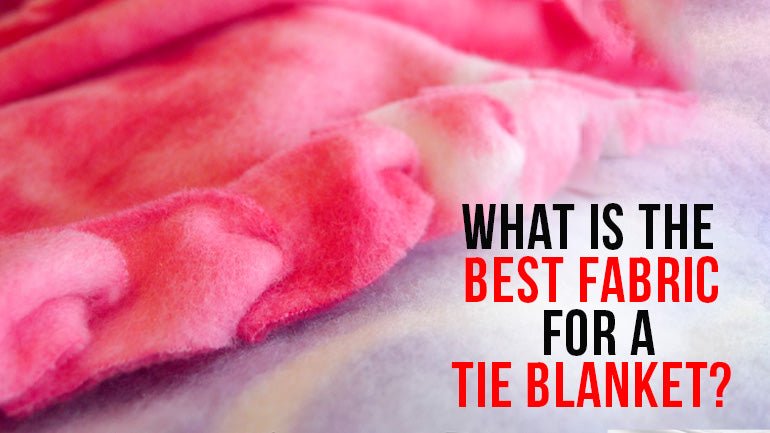Discover the delightful world of puff quilts with our step-by-step guide to creating a charming chevron puff quilt pattern. This modern twist on traditional quilting combines contemporary fabric prints with crisp white triangles to form light, puffy chevrons that make a perfect addition to any nursery. Crafting a puff quilt involves sewing individual "puff" squares separately and then assembling them into a larger quilt. While it may take a couple of days to complete, the process is soothing and rewarding
The modern and cozy quilt is perfect for a nursery or as a creative project. Here We'll guide you through each stage of the process, from cutting out the fabric to assembling the quilt top and adding the finishing touches.
What is a Puff Quilt?
A puff quilt is essentially a quilt where each block is filled with toy stuffing, creating a soft and puffy effect. These quilts are also known by other names like biscuit quilts or bubble quilts. Unlike traditional quilts that involve layering three components (top fabric, backing fabric, and middle wadding), puff quilts are made by creating and stuffing individual quilt blocks, which are then sewn together to form the final quilt.
Finished Size: Approximately 36 inches x 31 inches.
Notes:
- RST = right sides together.
- WOF = width of fabric.
- HST = half-square triangle.
- Seam allowances are all 3/8 inches, unless otherwise stated.
- Wash and press all fabrics well before cutting.
How much Fabric Do I Need for a Puff Quilt?
Before you start your puff quilt project, it's crucial to gather the necessary materials, including the right amount of fabric.
- White quilting cotton - 1 yard
- Printed quilting cotton (for the quilt top) - 1 yard (or at least four fat quarters of different fabrics)
- (You can use more fabric prints for added variety)
- Calico (UK) or Muslin (US) - 1 ½ yards
- Fabric for the binding - ½ yard
- Toy stuffing (approx. 250g or one pack of poly-fil toy stuffing)
- High loft batting - ¾ yard
- Low loft batting - 1 yard
- Fabric for the backing - 1 ¼ yards
- Embroidery Thread (to match the backing fabric)
How many Squares Do I Need to Make a Puff Quilt?
The number of squares you need for your puff quilt depends on the desired size and pattern. In this guide, we'll use a pattern that requires 80 half-square triangles (HSTs) to create the puff squares. Each HST consists of a white 5-inch square and a 5-inch printed square, sewn together diagonally.
If you don’t know What Are the Measurements for a Puff Quilt? Then the answer is that for our standard puff quilt pattern, the finished size will be approximately 36 inches by 31 inches.
Do You Put Batting in a Puff Quilt?
Yes, batting is an essential component of a puff quilt. You'll need both high loft batting and low loft batting for different parts of the quilt. High loft batting is used to create the puffy effect in each quilt block, while low loft batting adds structure and warmth to the overall quilt.
How to Make a Puff Quilt by Hand
Here are step-by-step instructions for creating your beautiful puff quilt.
Cutting Out
Step 1
Cut forty 5-inch squares from white quilting cotton. Additionally, cut two strips measuring 4 inches by 30 inches, two strips measuring 4 inches by 23½ inches, and four 4-inch squares from white quilting cotton.
Step 2
From printed quilting cotton, cut forty 5-inch squares and four 4-inch squares.
Step 3
Cut eighty-four 4-inch squares from muslin. Also, cut two strips measuring 4 inches by 30 inches and two strips measuring 4 inches by 23½ inches from muslin.
Step 4:
Cut four strips measuring 4 inches by the width of the fabric (WOF) from your chosen binding fabric.
Step 5:
From high loft batting, cut four 4-inch squares, two strips measuring 4 inches by 30 inches, and two strips measuring 4 inches by 23½ inches.
Prepare the Half-Square Triangles
Step 1:
Take one 5-inch square of white fabric and one 5-inch printed square, placing them right sides together (RST). Using a ruler, mark a diagonal line down the center of the squares. Then, sew a ¼-inch seam allowance on either side of the marked line. Cut along the marked line and open to reveal two half-square triangles (HSTs).
Step 2:
Iron the HSTs towards the colored fabric and trim the overhanging corners. Repeat this process for all 40 white squares to create a total of 80 HSTs.
Assemble the Quilt Top
Step 1
Begin arranging the HSTs to create the desired pattern for your puff quilt. Rotate some of the HSTs to achieve a chevron pattern. Try to arrange the puffs so that there are eight of them lined up horizontally and ten of them stacked vertically.
Step 2
Sew the puffs together one at a time, ensuring the right sides are facing and using a 5⁄8-inch seam allowance to conceal the seams. Continue sewing until you have ten rows of eight puffs each.
Step 3
Pair up two rows of puffs, aligning the seams at each intersection and placing a pin at each intersection. Proceed to sew the rows together using a 5⁄8-inch seam allowance. It's easiest to sew the rows together in sets of two and then in sets of four.
Step 4
Create cornerstones by making a quilt sandwich with the remaining 4-inch squares of patterned fabric, high loft batting, and white fabric. Repeat this process with the two 4-inch by 30-inch strips and two 4-inch by 23½-inch strips of muslin, batting, and white fabric to make the borders. Baste the edges of these sandwiches. Sew in a straight line along the long edges to stop them from getting stretched diagonally
Step 5
With the right sides together, sew the four squares to the ends of the long borders.
Step 6
Pin one short border to the short side of the quilt, right sides together, and sew with a 5⁄8-inch seam allowance. Repeat with the second short border. Then pin one long border to the long side of the quilt, lining up the end squares with the short borders. Sew with a 5⁄8-inch seam allowance. Repeat with the second long border.
Step 7
Cut a piece of low loft batting slightly larger than your quilt top and a backing fabric (such as soft minky fabric) slightly larger than the batting. Layer these together with the batting in the middle.
Smooth each layer thoroughly and then pin liberally along each side of the quilt. Baste around the edges of the quilt using a 3⁄8-inch seam. Trim any excess batting and backing.
Step 8
To bind your quilt, sew your fabric strips end to end on the bias, press them in half lengthwise, and use them to bind the quilt.
Step 9
Tack down the quilt in the puff intersections using a large embroidery needle and embroidery floss. You don't need to tack every intersection; tacking every set of two will suffice. Knot the floss on the top of the quilt and trim the ends close to the knot.
Learn more about How to Sew Minky Baby Blanket?
Faqs
Are puff quilts heavy?
Yes, puff quilts can be heavy, especially when they are densely filled with stuffing. The amount of stuffing used and the size of the quilt will affect its weight.
Can you make a puff quilt with a regular sewing machine?
Yes, you can make a puff quilt with a regular sewing machine. While it may require some patience and proper handling duaime to the thickness of the quilt, it is entirely possible to create a puff quilt using a standard sewing machine.



